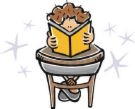There are some excellent books that can help you with these types of facts; two of my favorite resources are World-Building, by Stephen L. Gillett, and Worlds of Wonder by David Gerrold. World-Building is geared more towards the science fiction genre, teaching about star systems and geology. Worlds of Wonder is a guide to both science fiction and fantasy, describing the difference as “science fiction is about what is possible, fantasy is about what is not”. In either instance you are creating a world that must follow certain rules.
There is a lot of research involved even if your created world is similar to the real world. As a matter of fact, the closer you stay to “real world norms” the less likely it is for problems to leap out at the reader. To ensure the best results, stay consistent and learn all you can about similar real world models. For instance, in geographic areas that are wooded you may need to know there are more than trees and deer that live here. You may want to study basics such as the type of flora and fauna that can be supported by this type of physical location. The goal is not to make you an expert on these facts, but the way these facts support the characters and activities that may occur in your book. Remember, while your world may appear as a fantastical array of pure imagination to your readers, it has to be realistic to the characters living there to give it a credible depth.
Think of the imaginative world of Willy Wonka in Roald Dahl’s Charlie and the Chocolate Factory. Once you step inside the doors of Willy’s world, you totally leave behind reality as we know it. Suddenly, there are flowing chocolate rivers, strange little creatures called Oompa Loompas that work in the factory (and the back story of why humans aren’t trusted with the candy maker’s most treasured secrets and why the Oompa Loompas came to live in this scrumpdillyicious world), and elevators that travel in every imaginable direction besides up and down. The world springs to life and what seems incredible to the reader is the everyday norm to the characters in the book. Don’t be afraid to experiment to see what will work at the culmination of your research and imagination. Take advantage of the differences between your creation and the familiar – let your imagination soar. Be detailed, you don’t want your reader to miss a single thing in this creative wonderland.
What will be different in your world? What bearing will it have on your story? This technique works in any genre you are writing. Not all world builders write science fiction or fantasy. Perhaps your story takes place in a fictitious town where an old abandoned well has been forgotten by everyone in the town. On the surface it seems innocuous enough except…the shady stranger who seems oddly attracted to it, compelled to guard it in a town where it’s already been forgotten. Which way will this story grow? Is it the beginning of a mystery and the stranger is hiding a murder weapon there? Maybe the well is just outside of a lovely summer home deep in the forest and the owners have moved away making it the perfect locale for a romantic rendezvous. Add a few darker details with a dash of supernatural and sudenly the same lacation becomes the backdrop for a horror story. Looking for a different direction to go? Perhaps the well is really a portal to a parallel universe. The possibilities are only limited by our own imaginations. What will you find in the places you create?






























